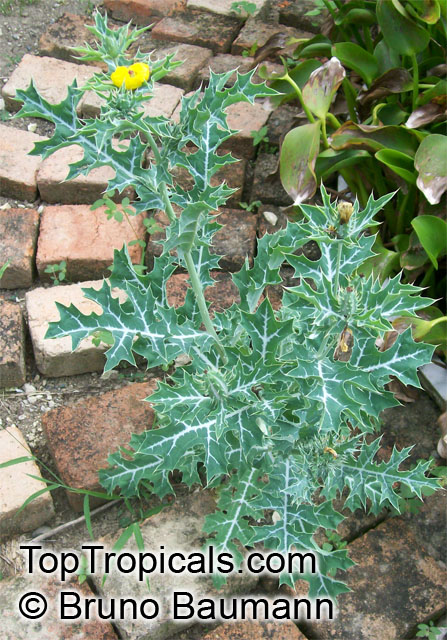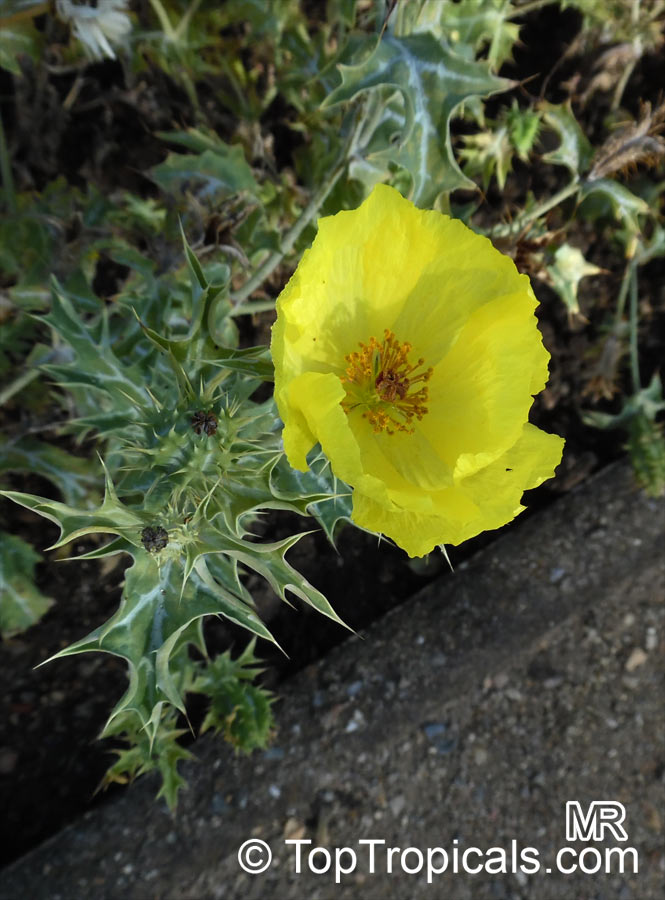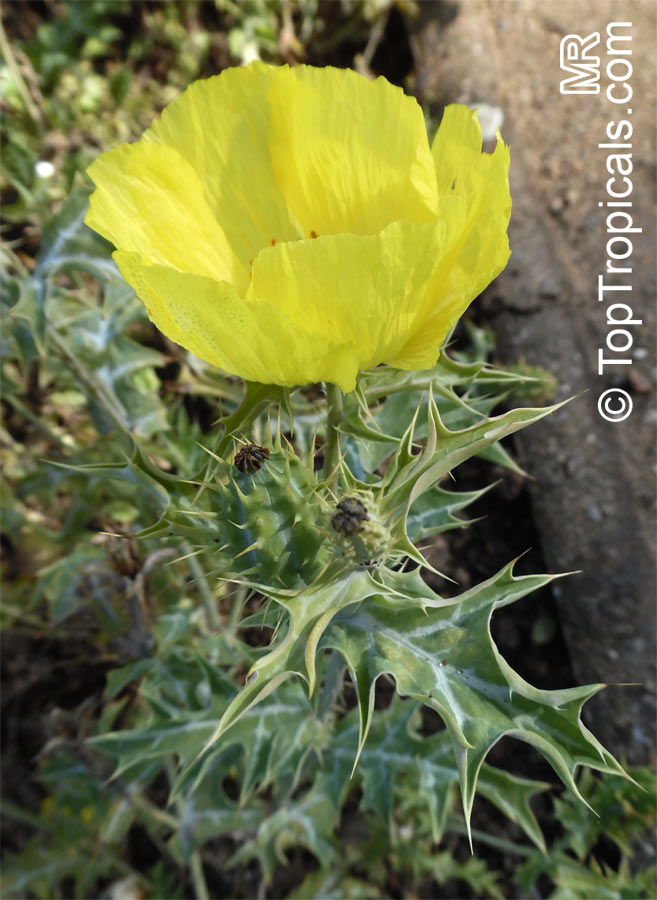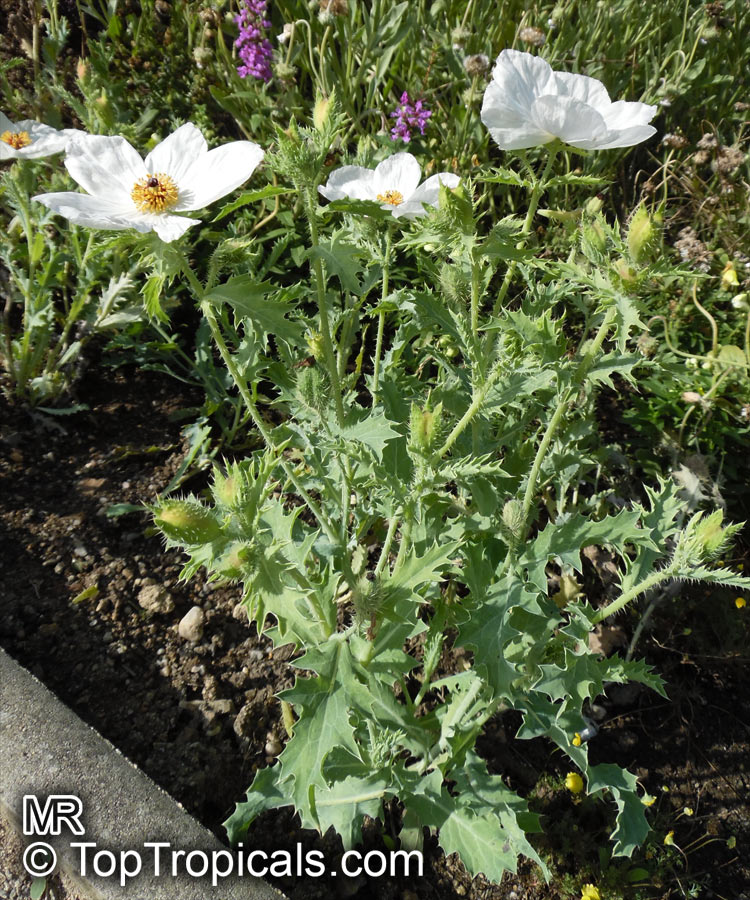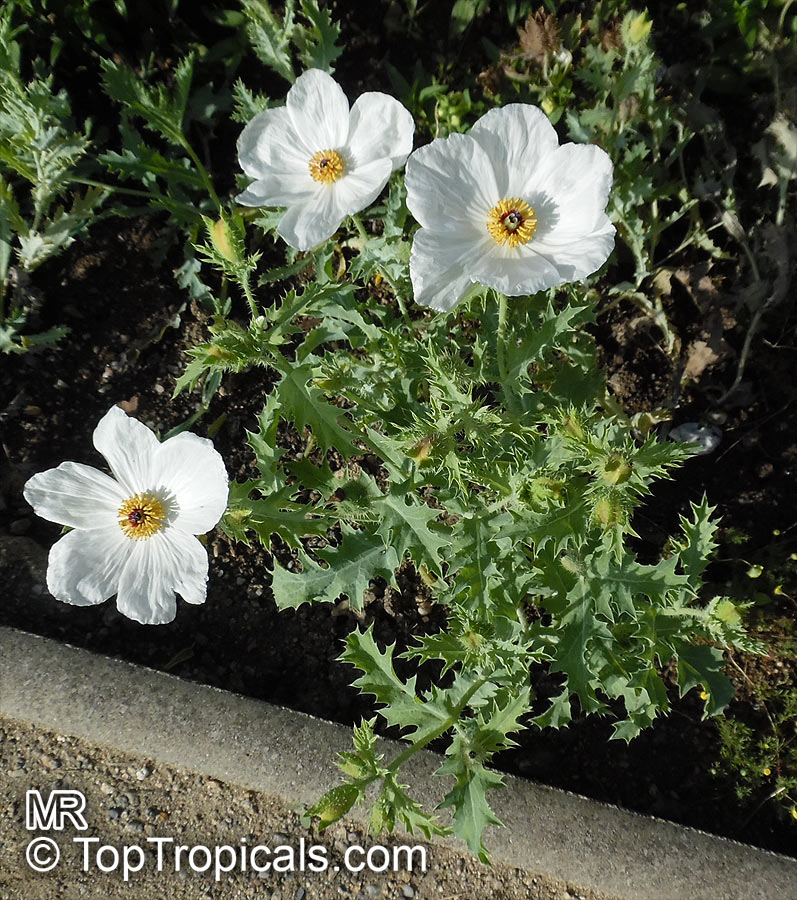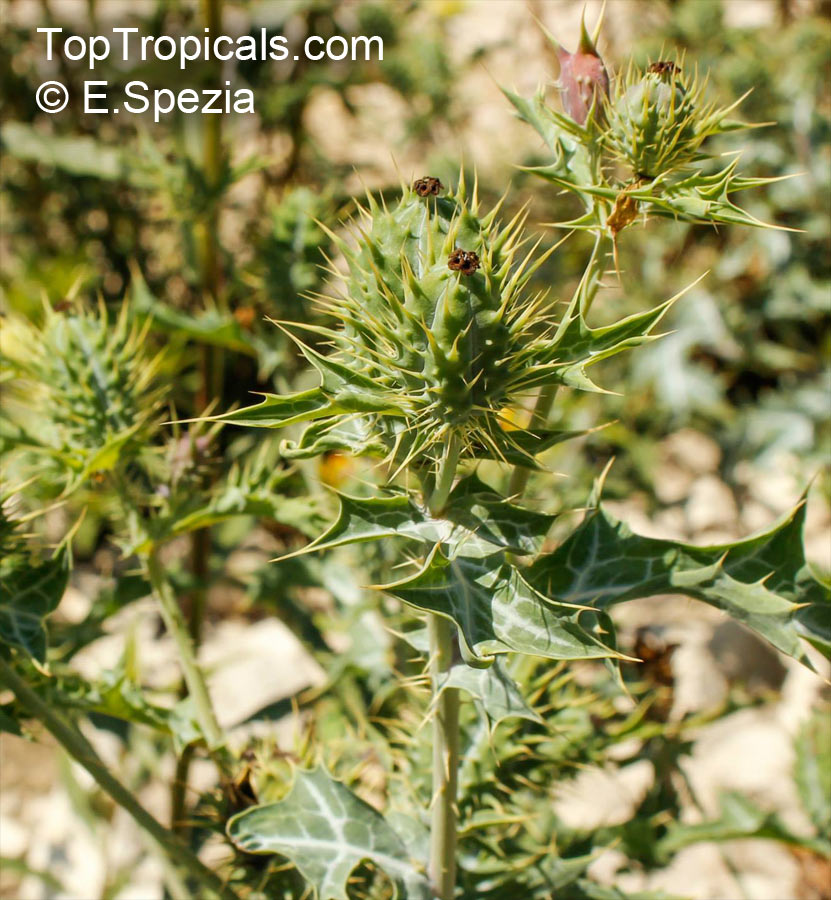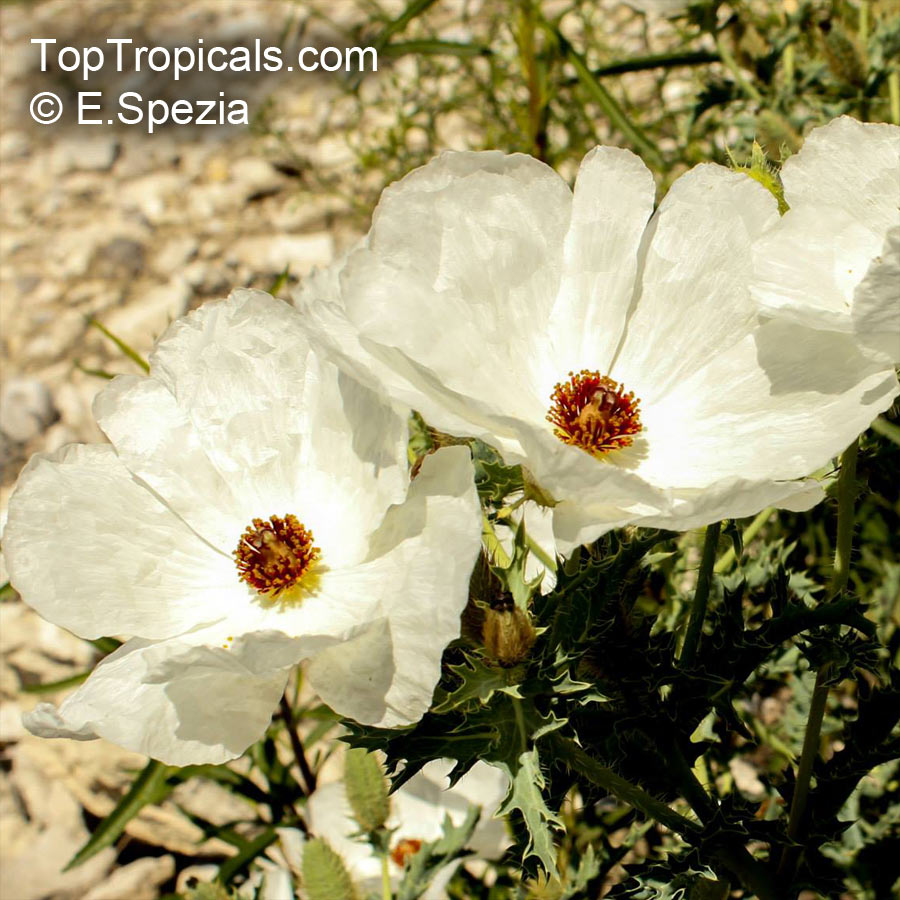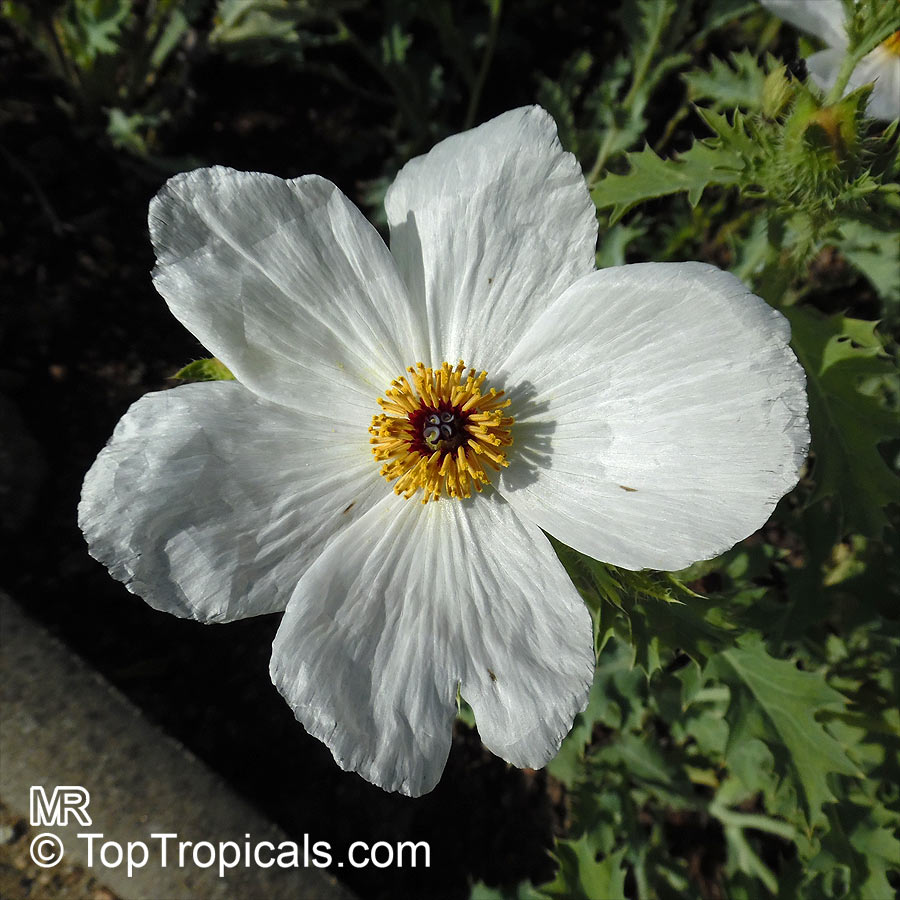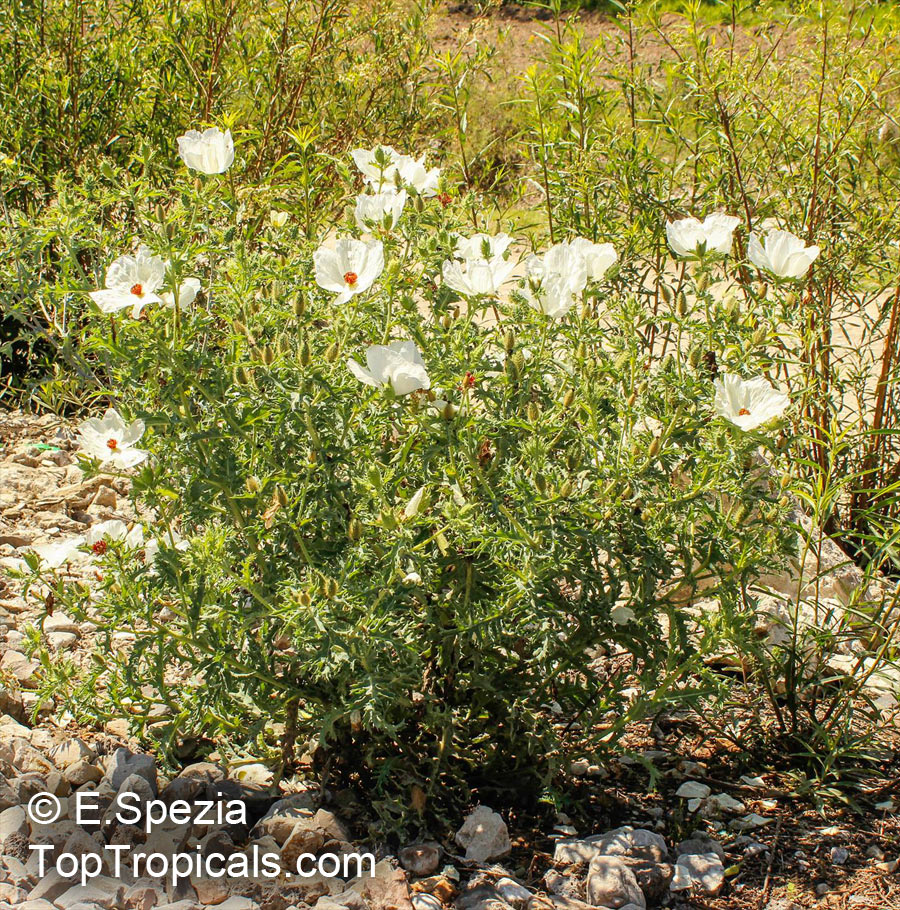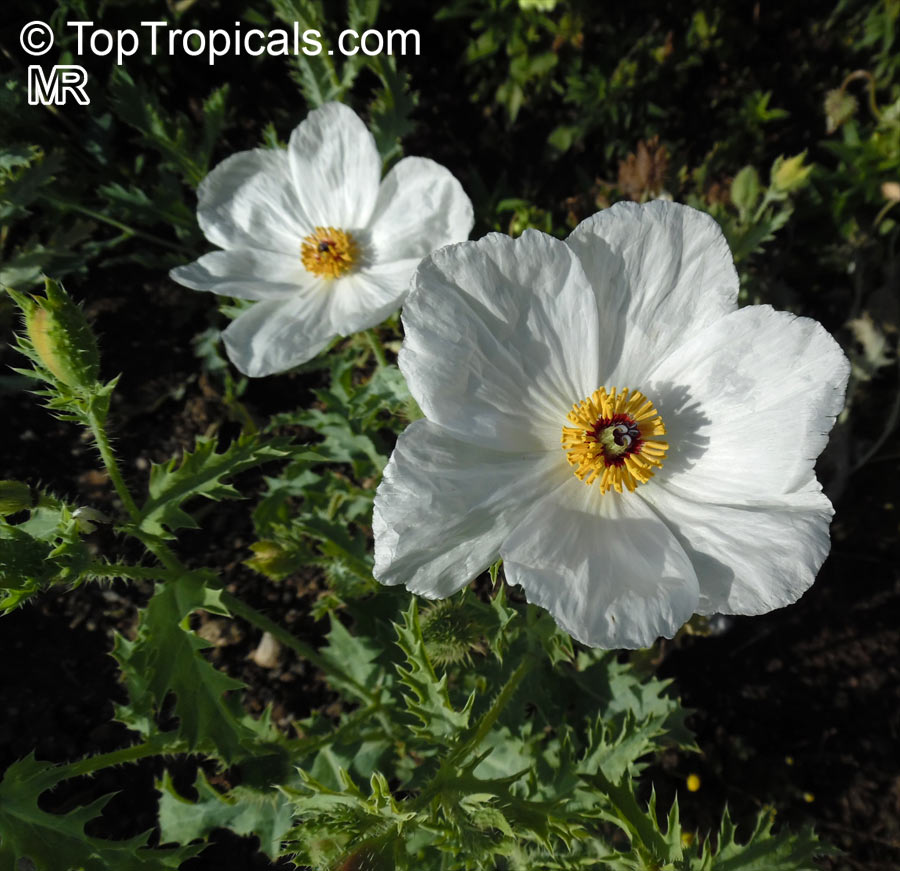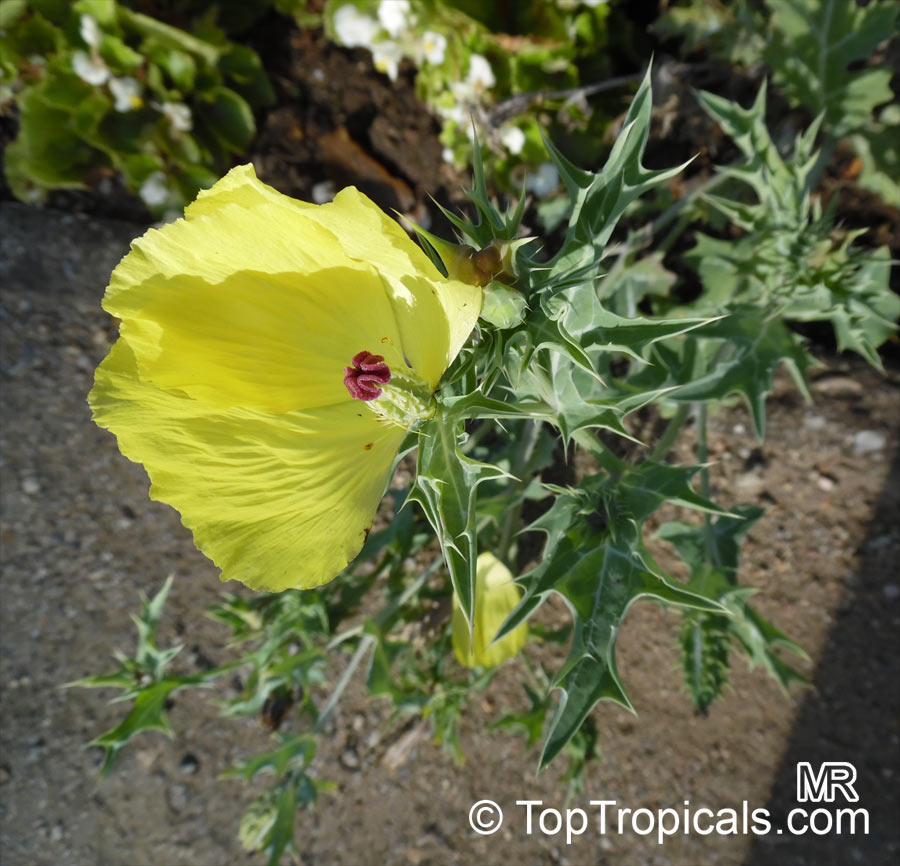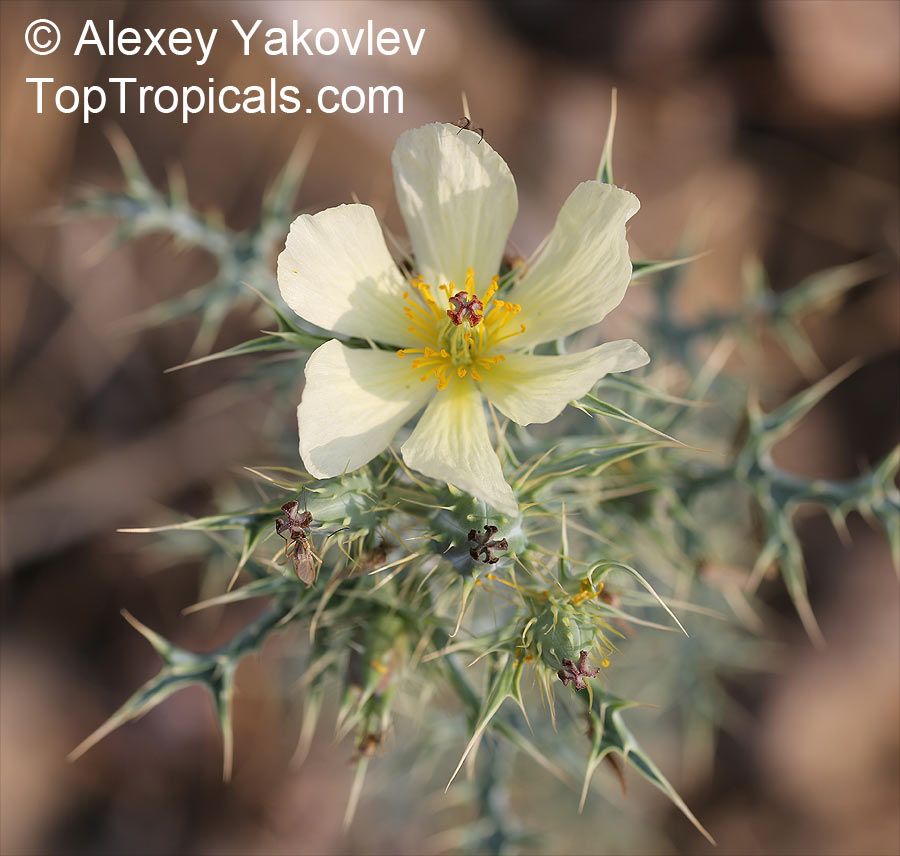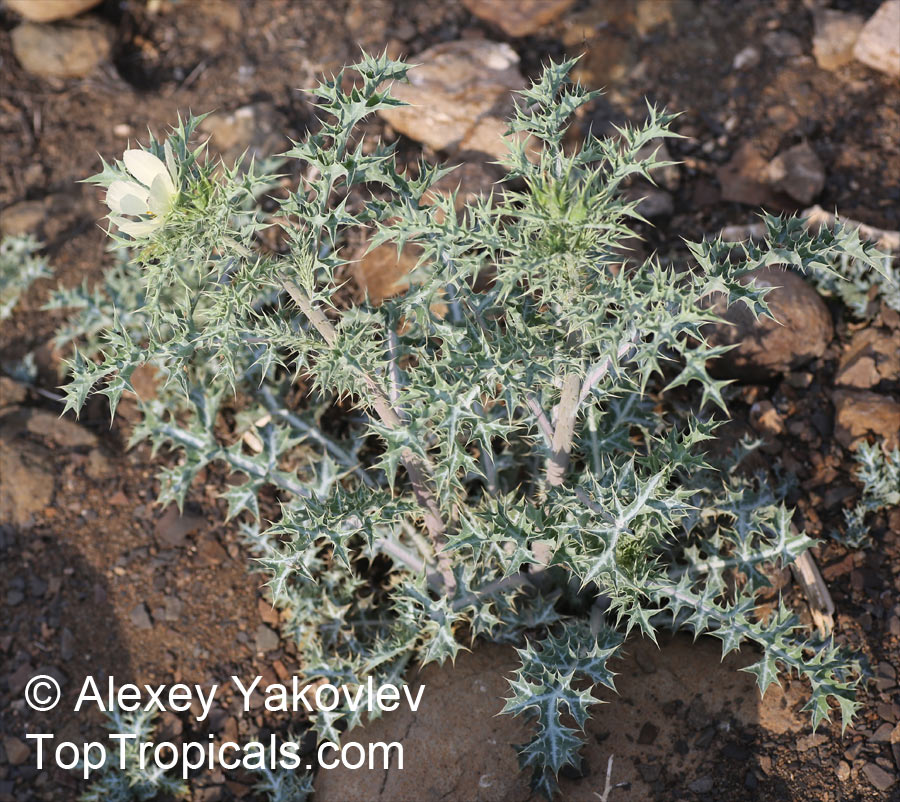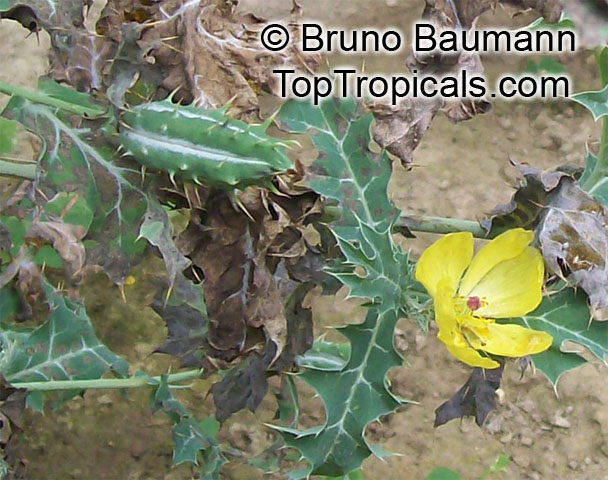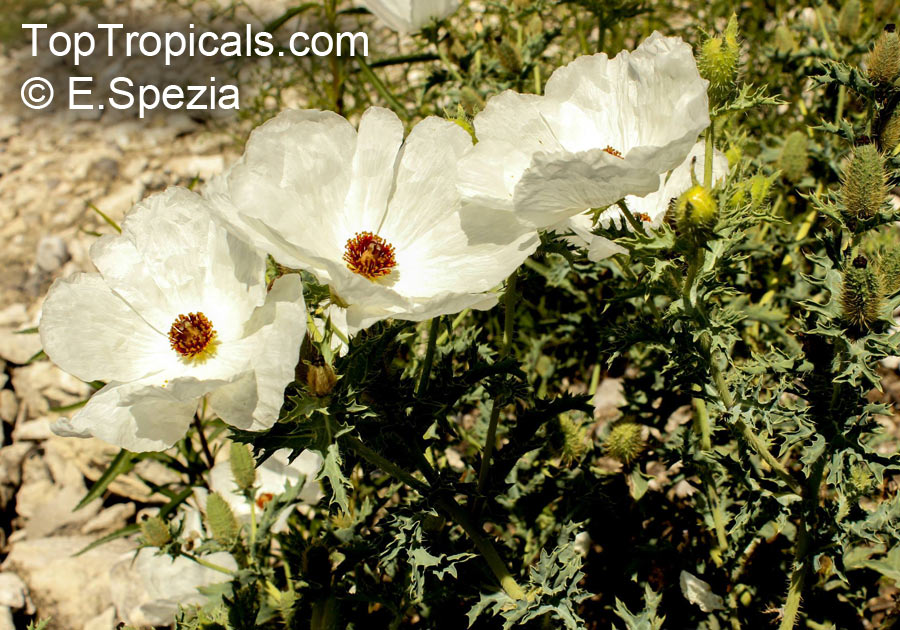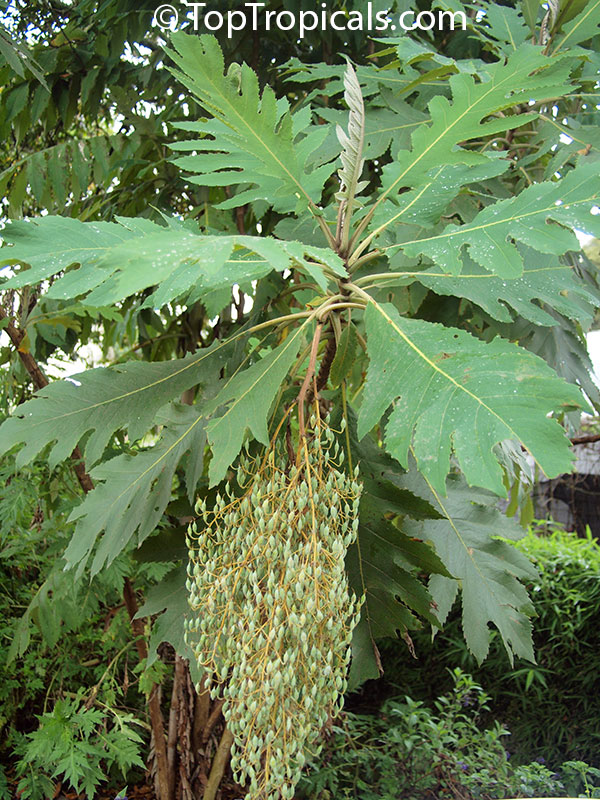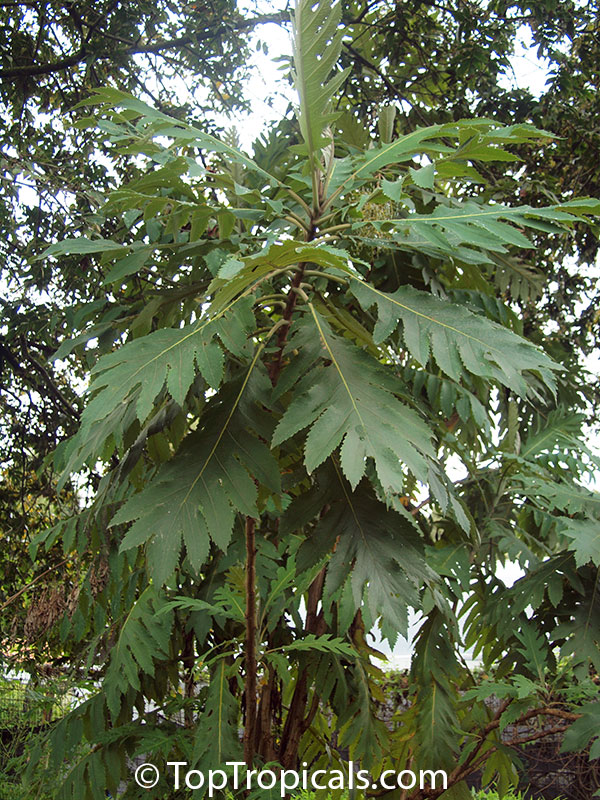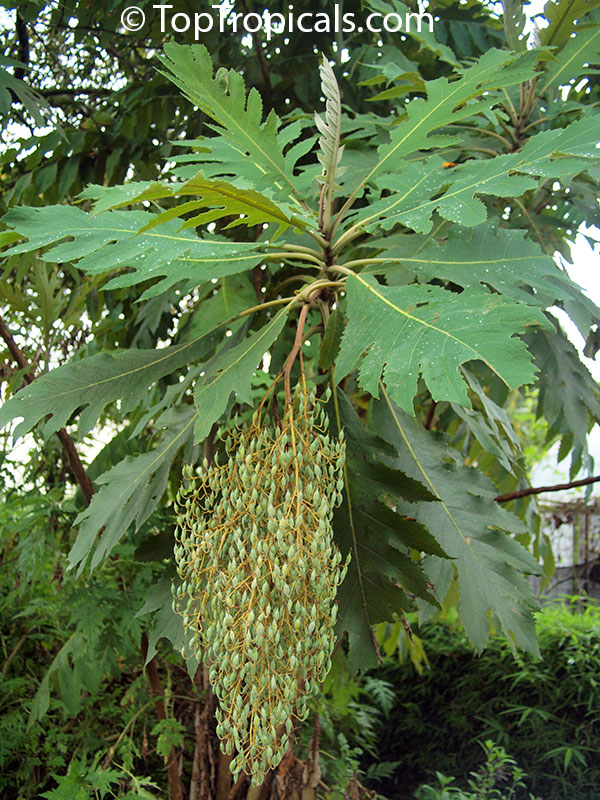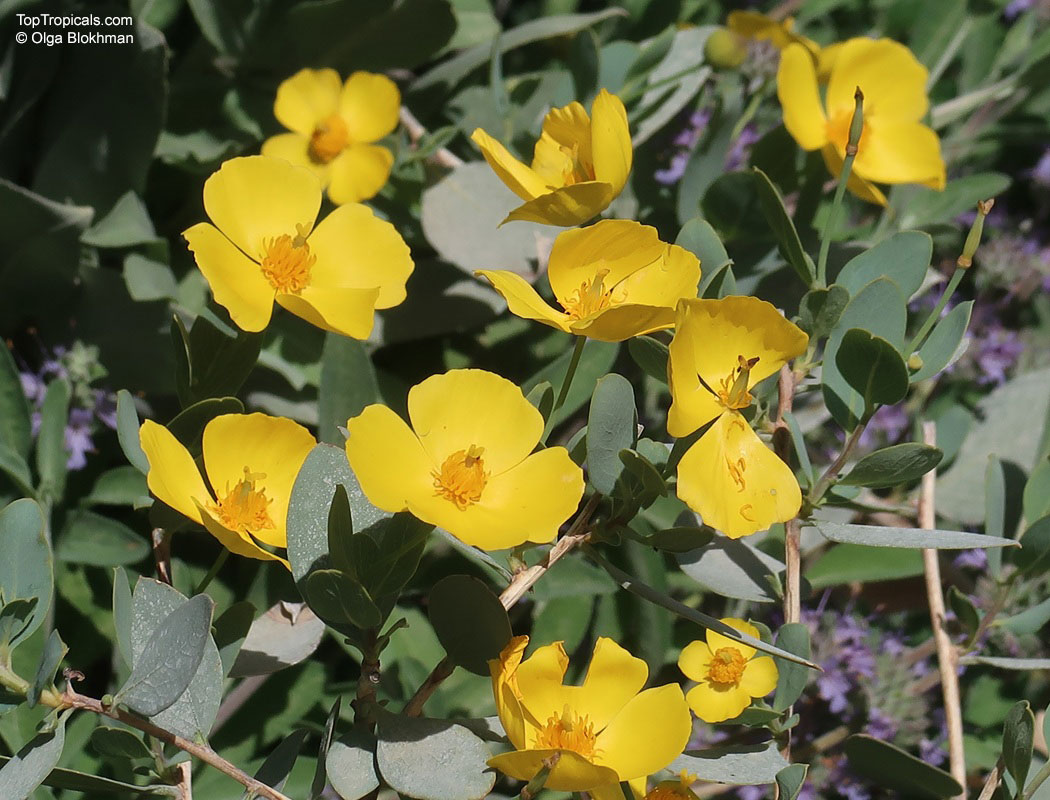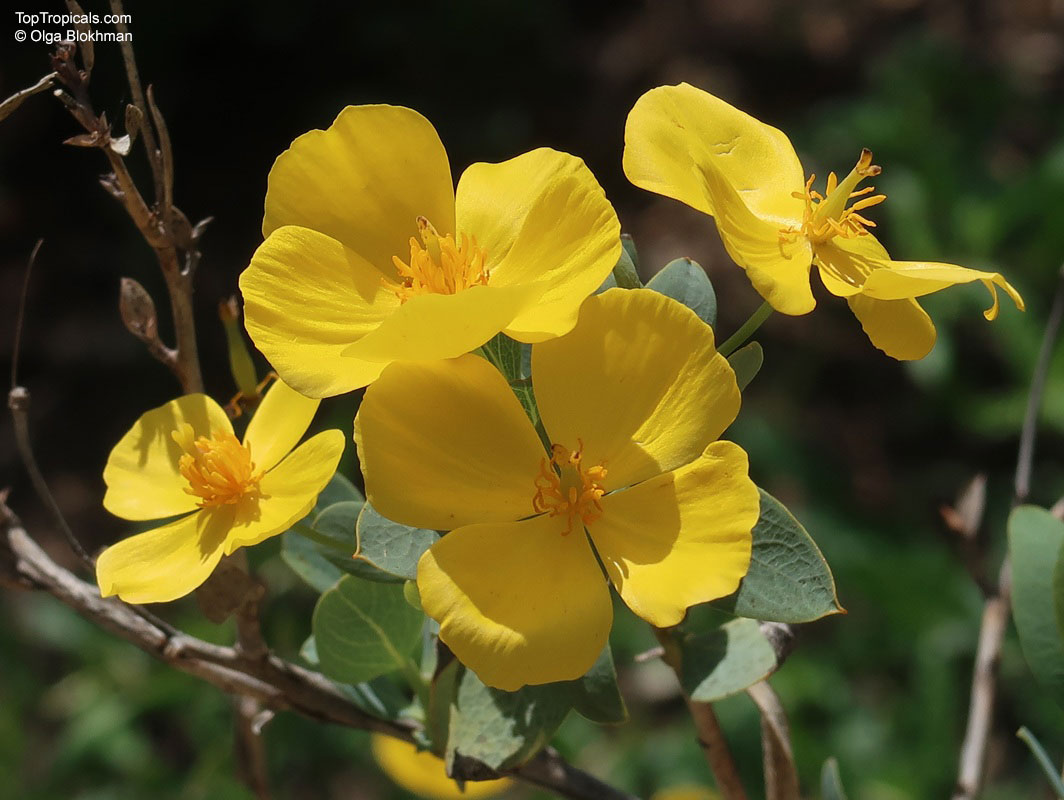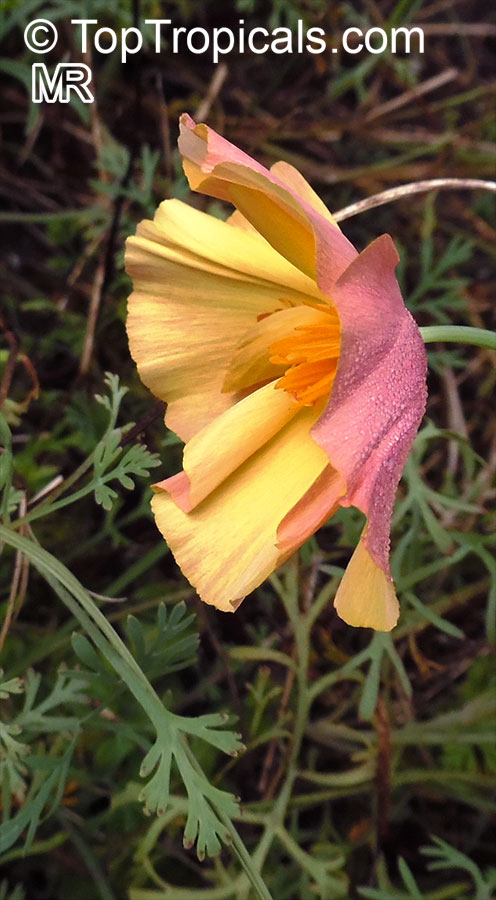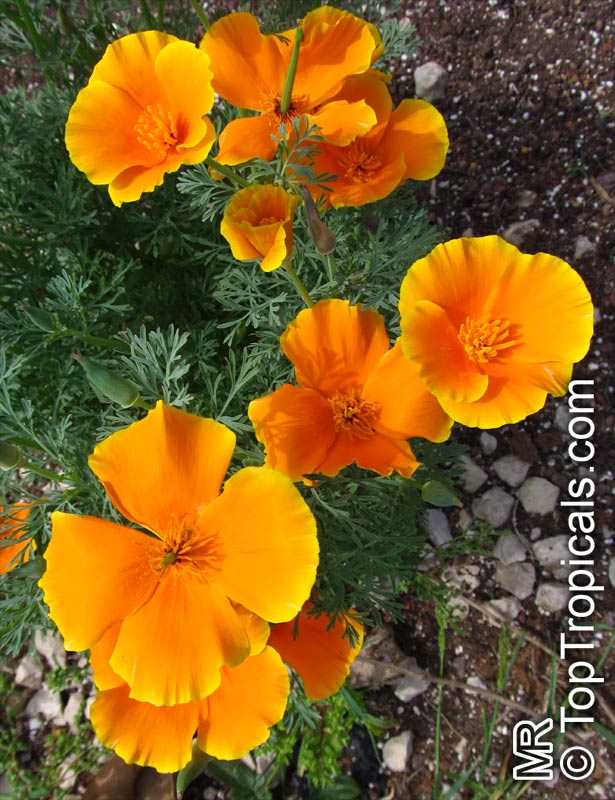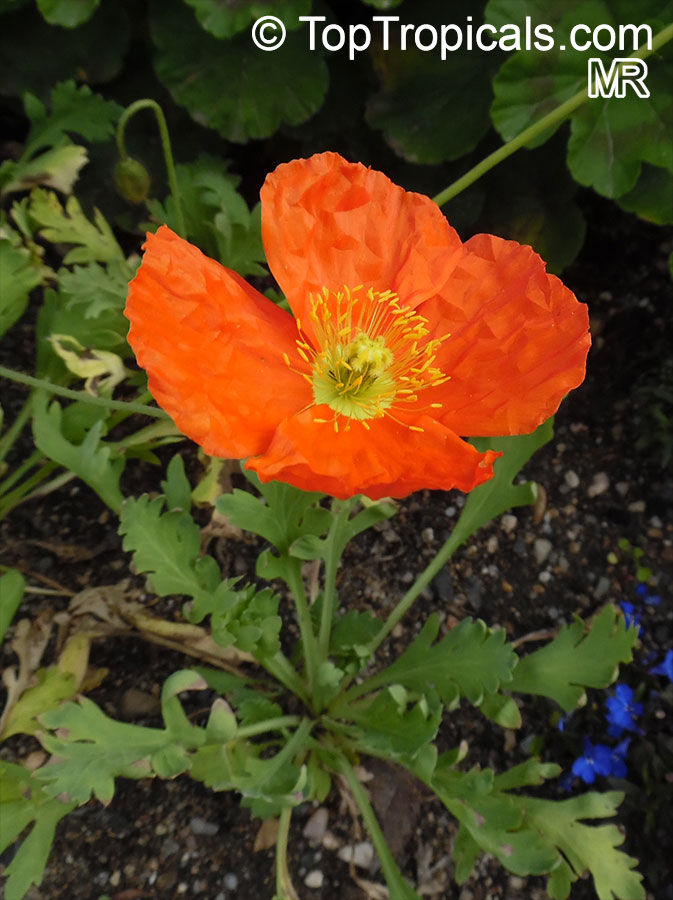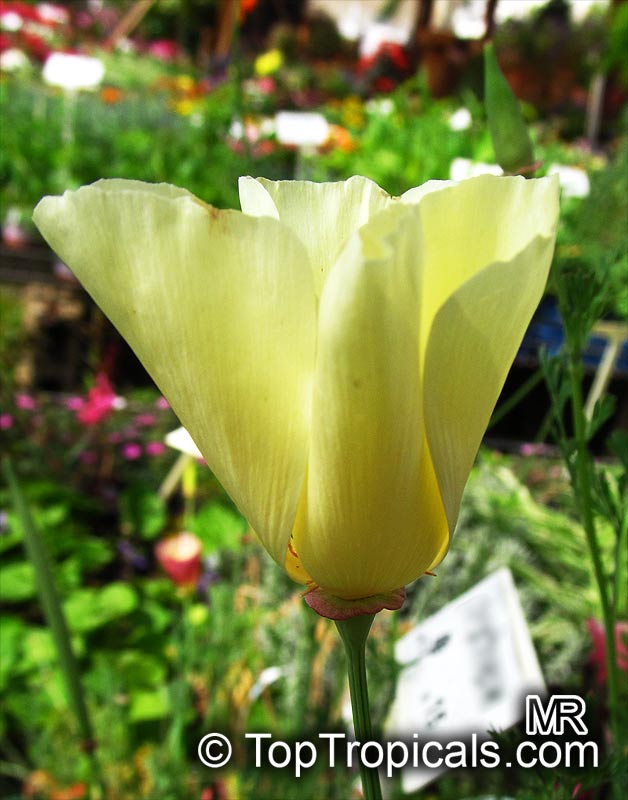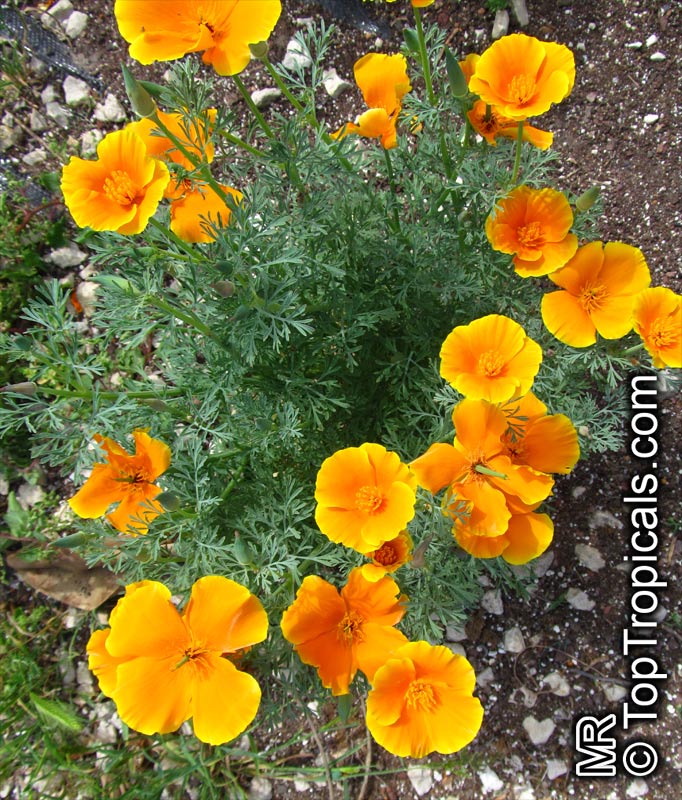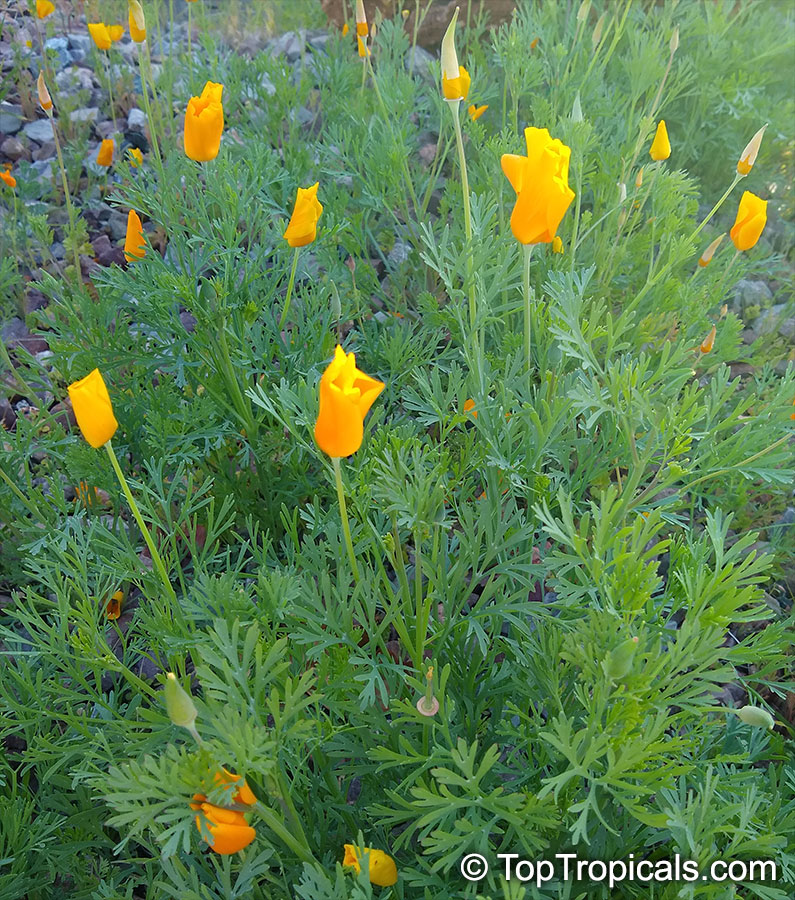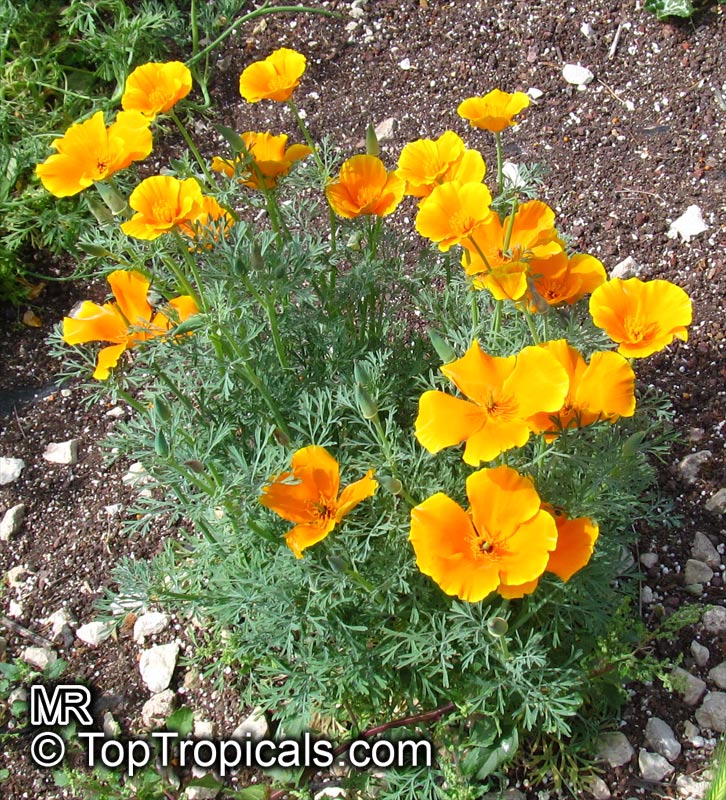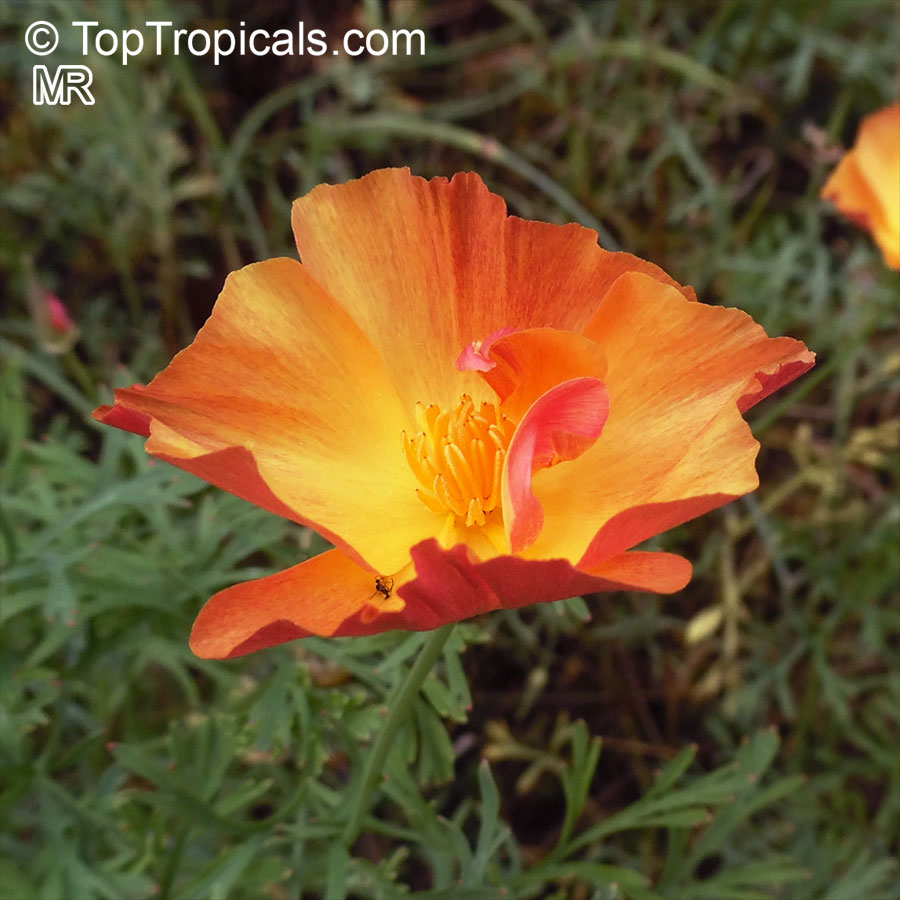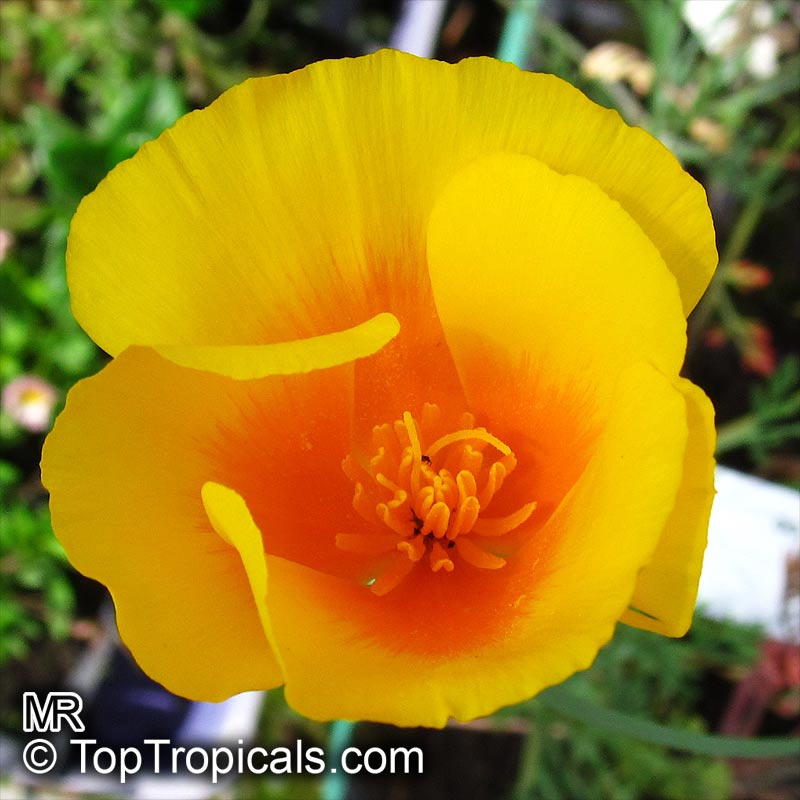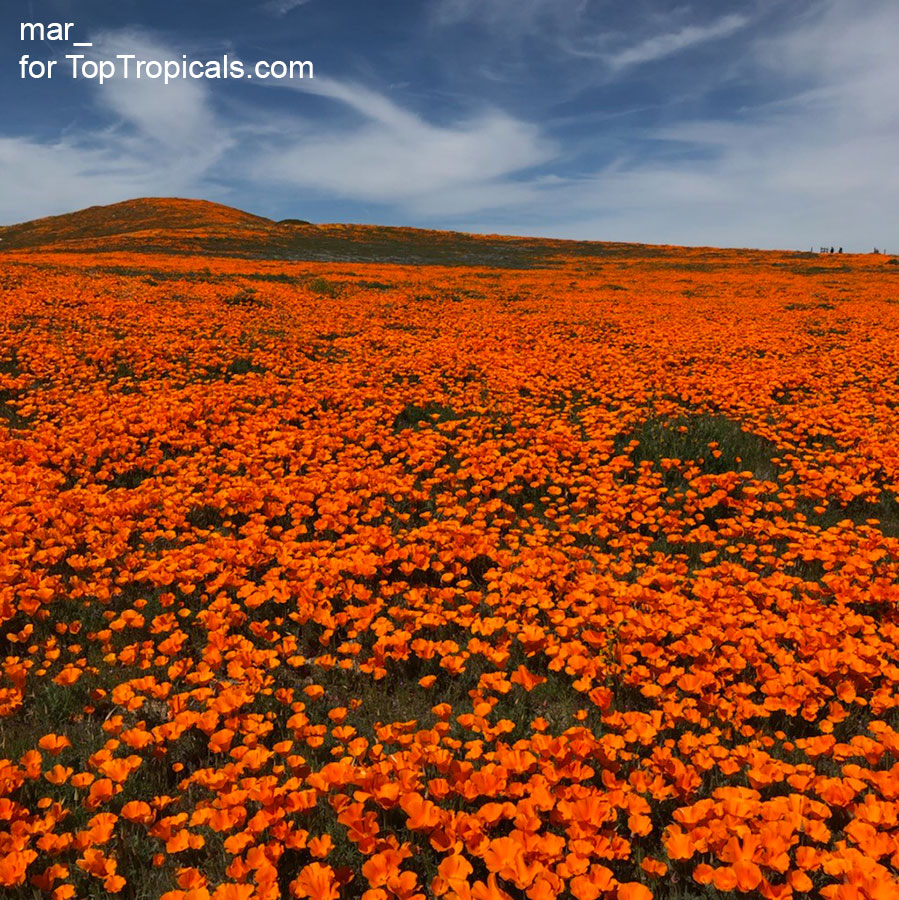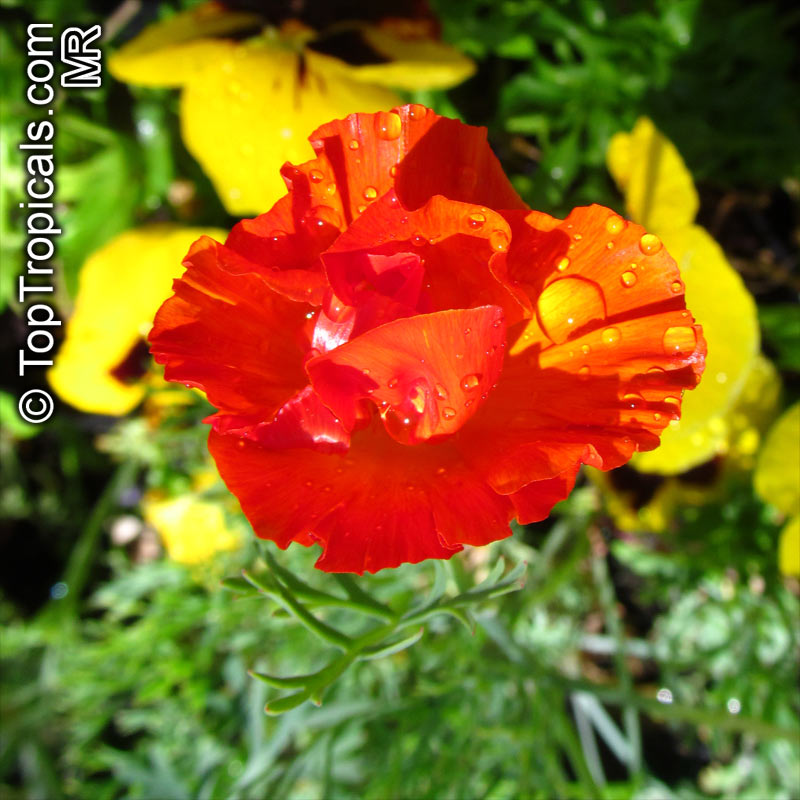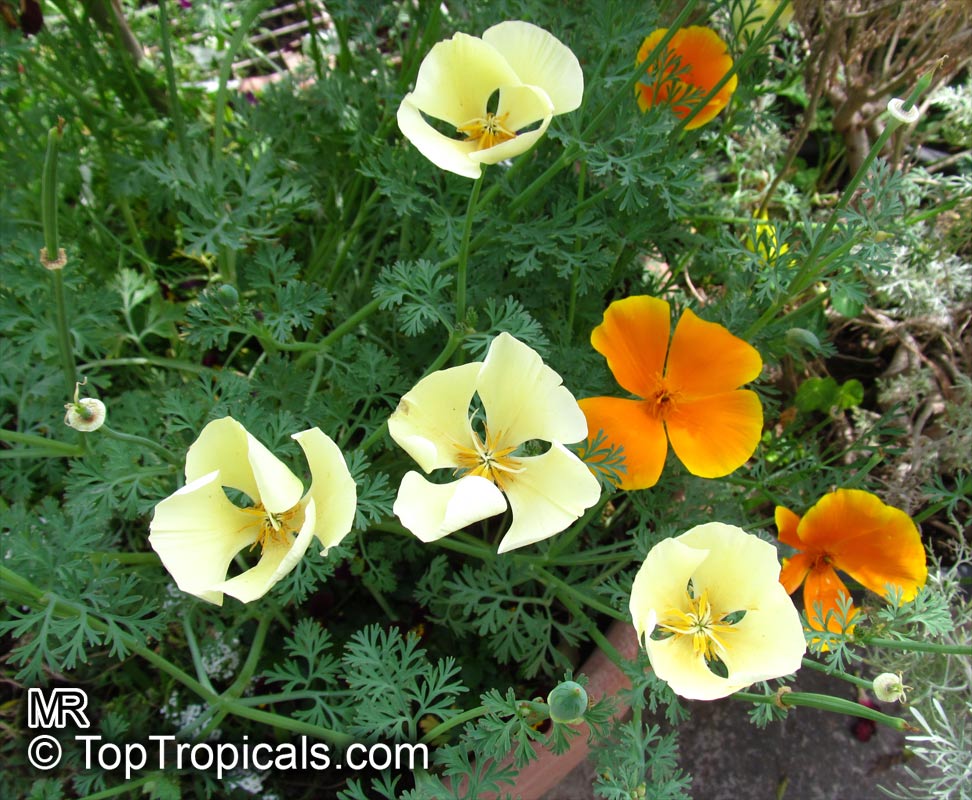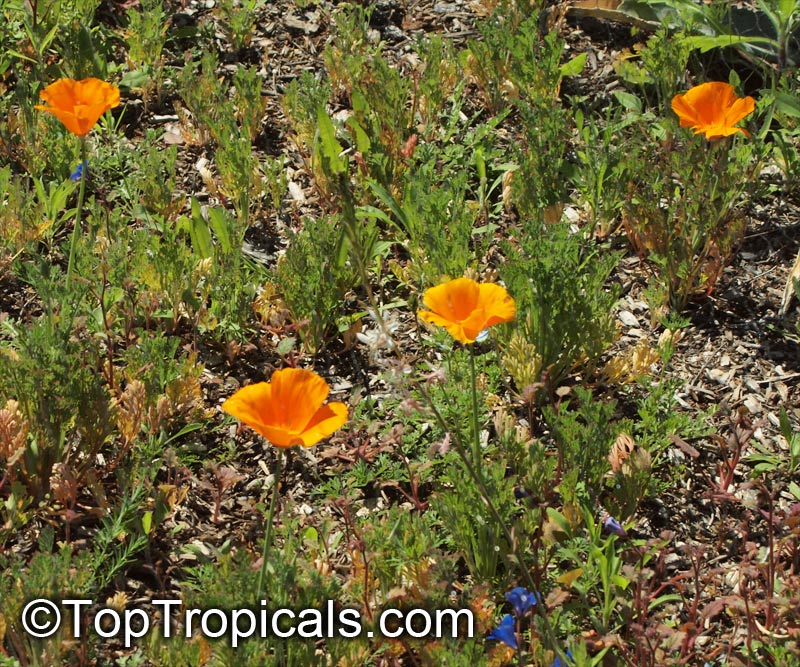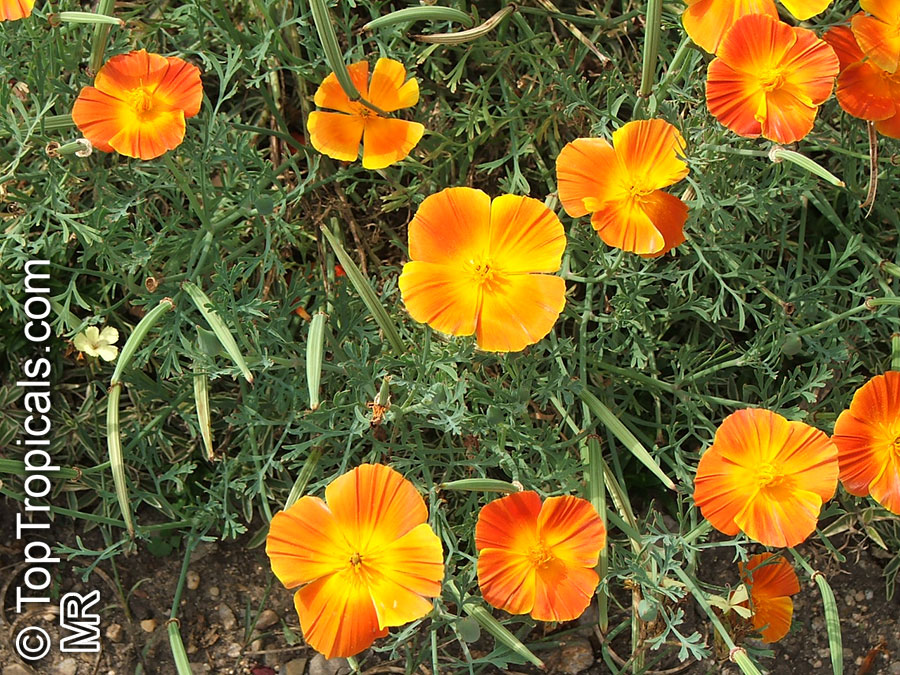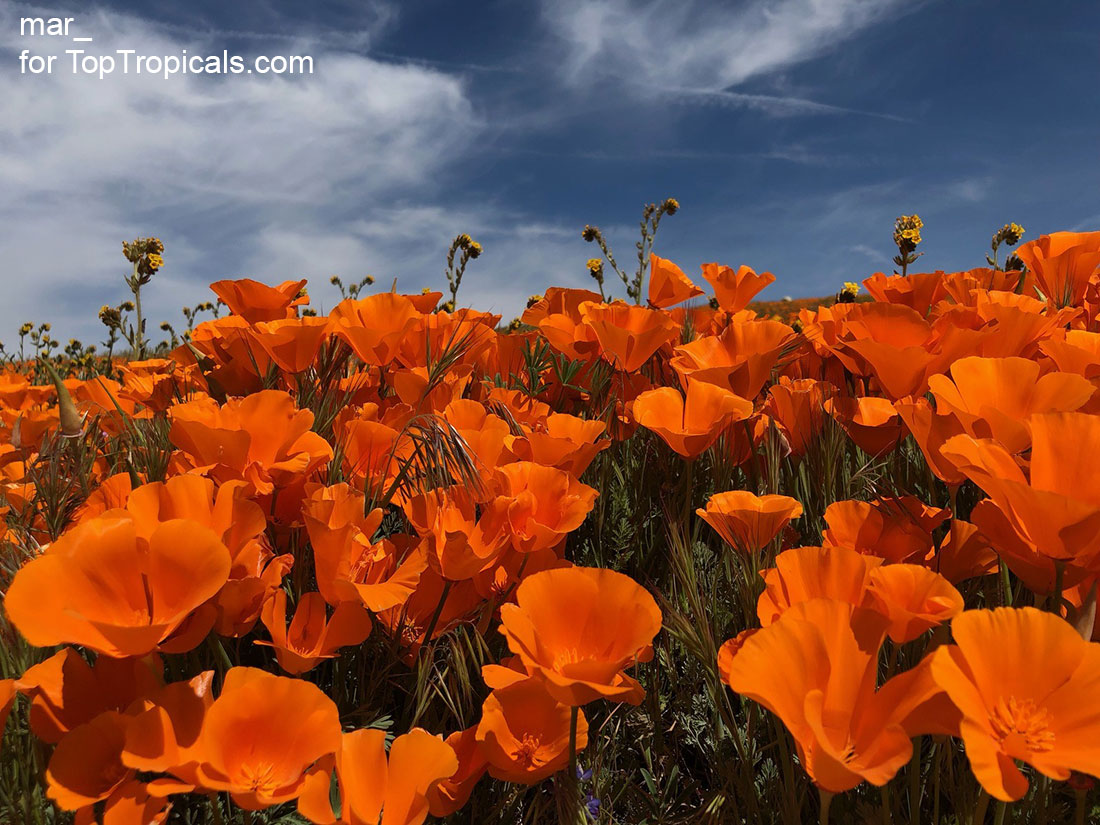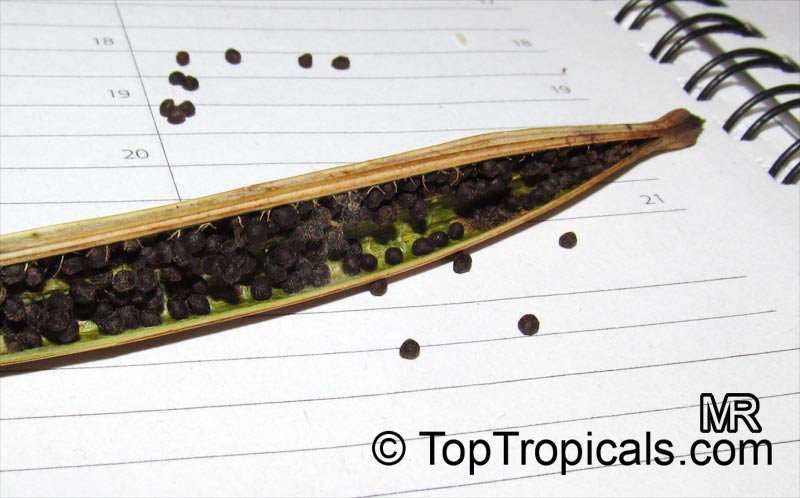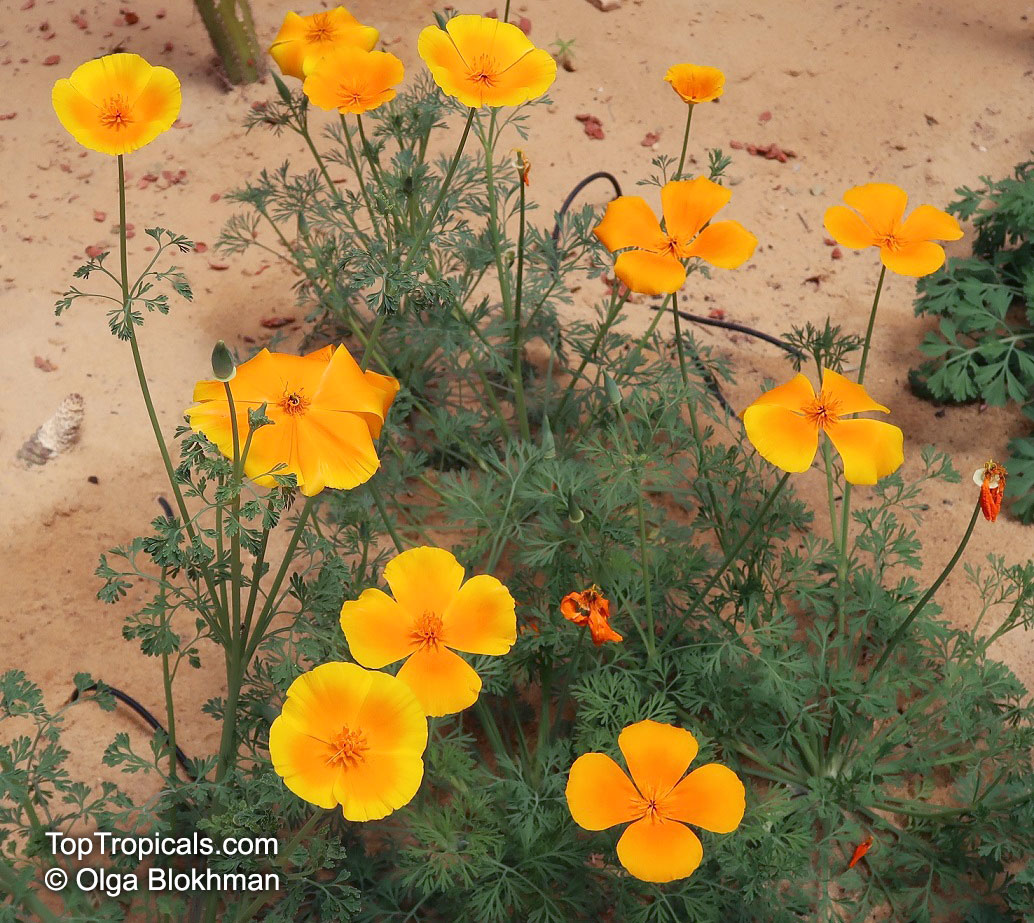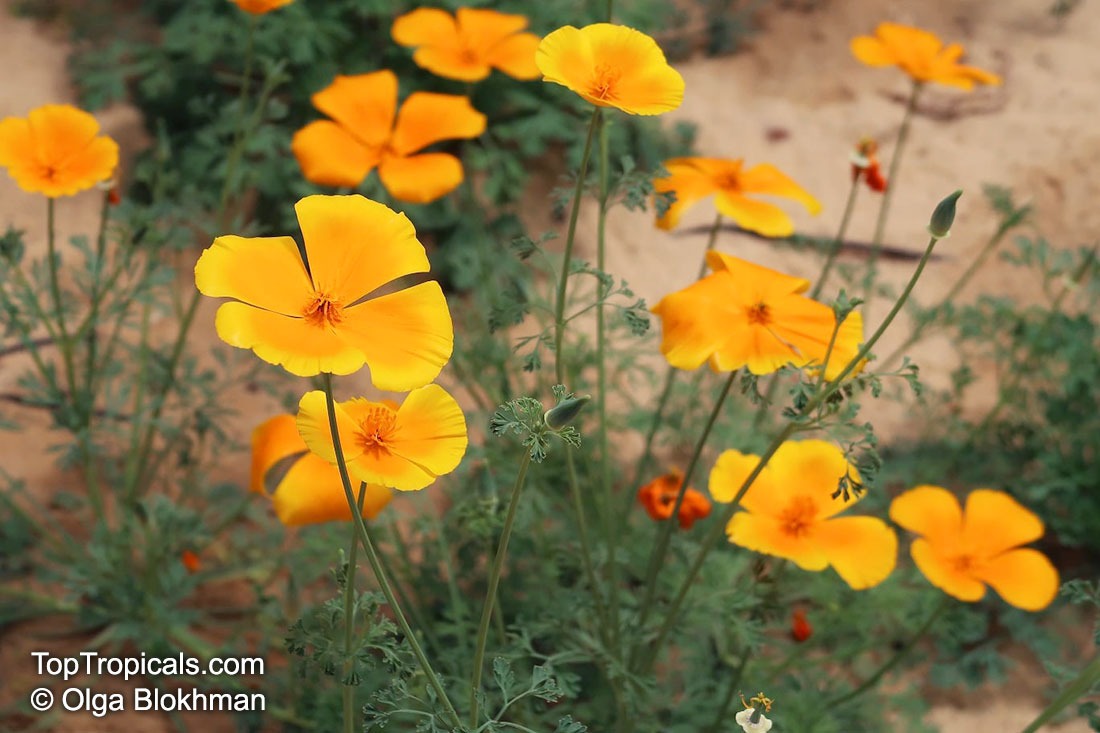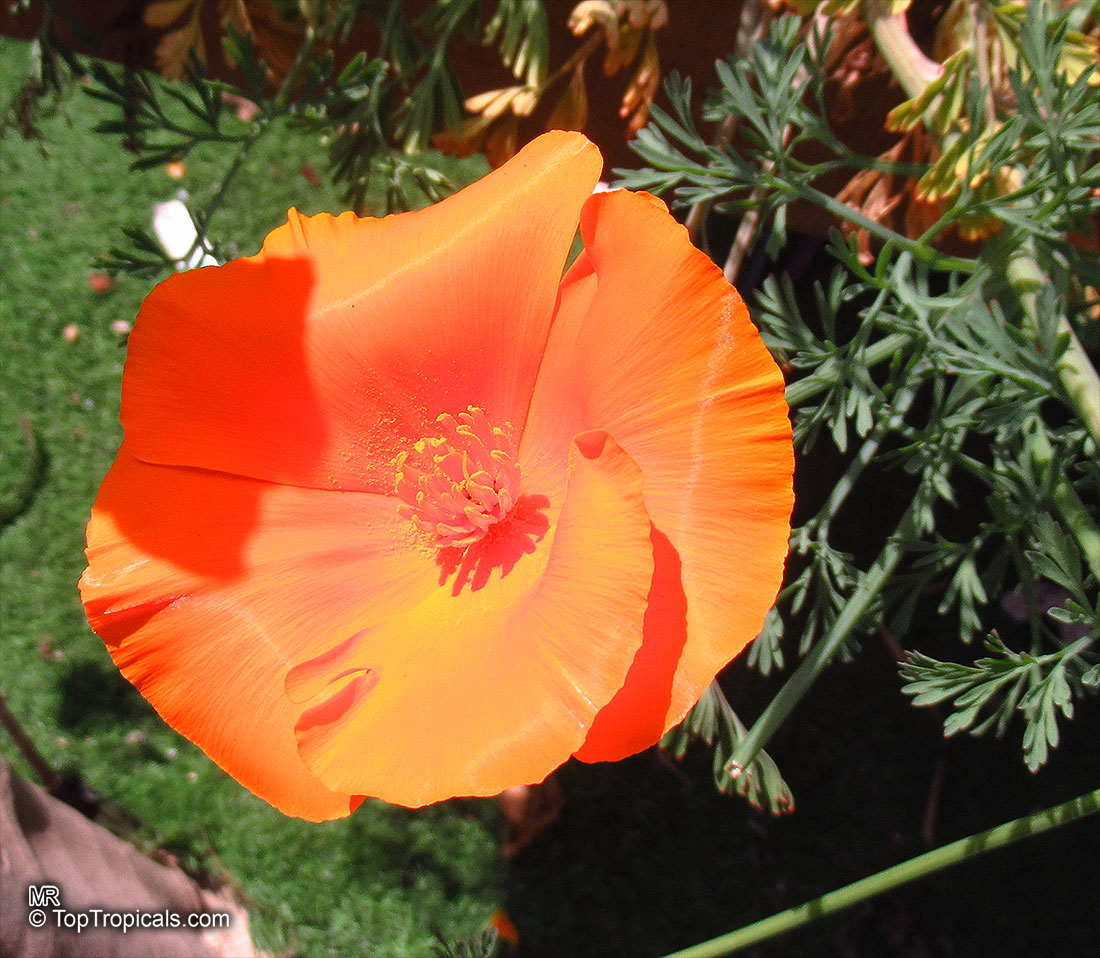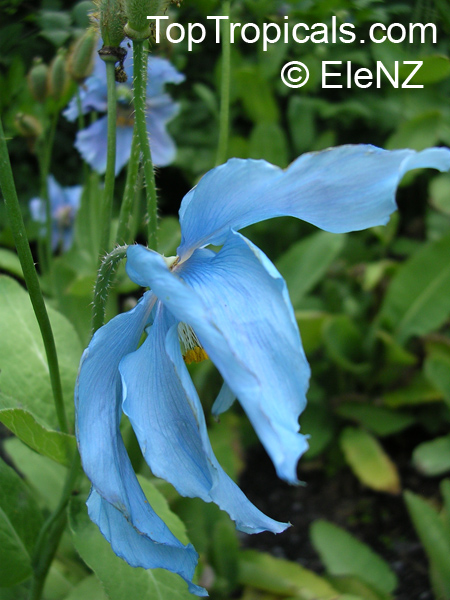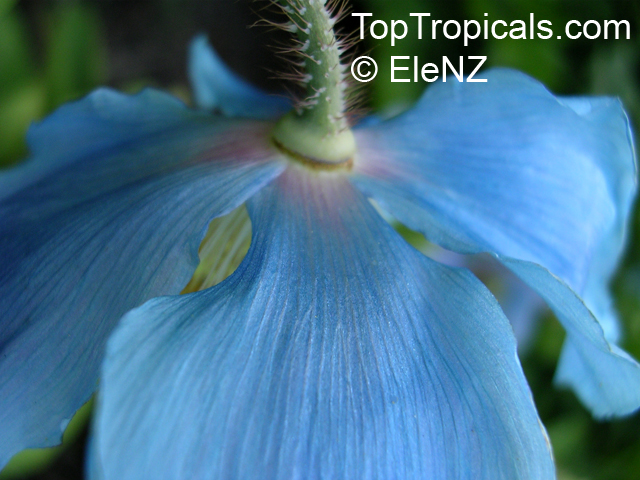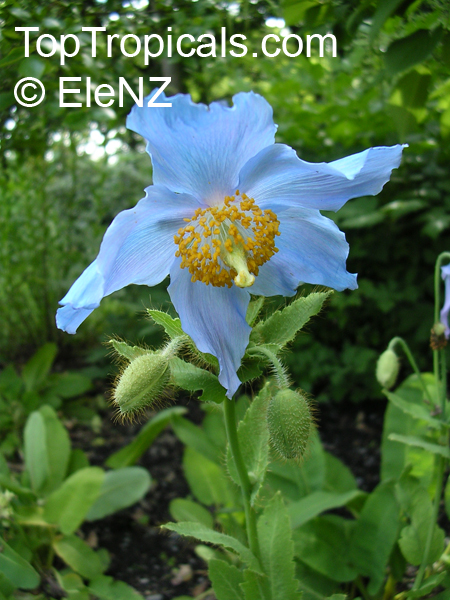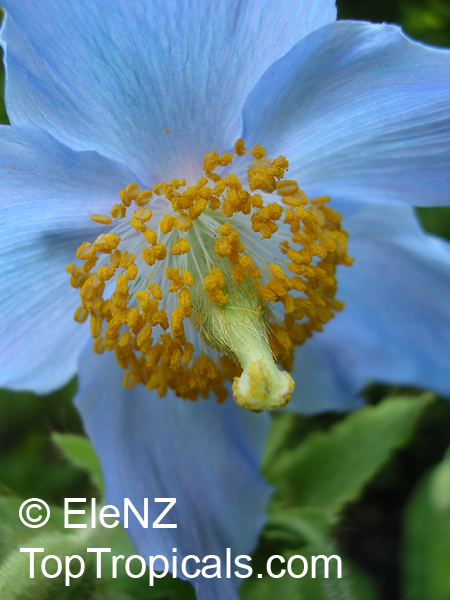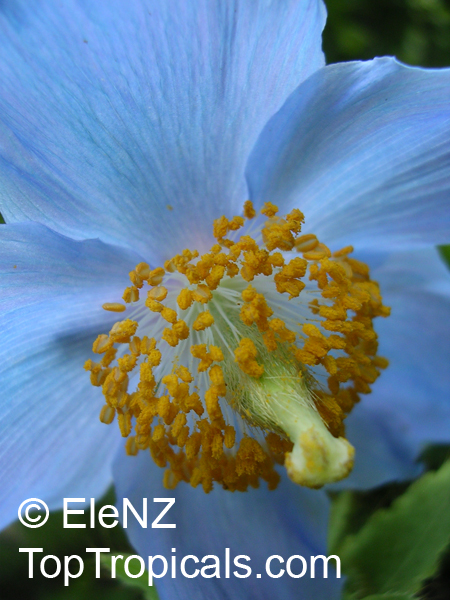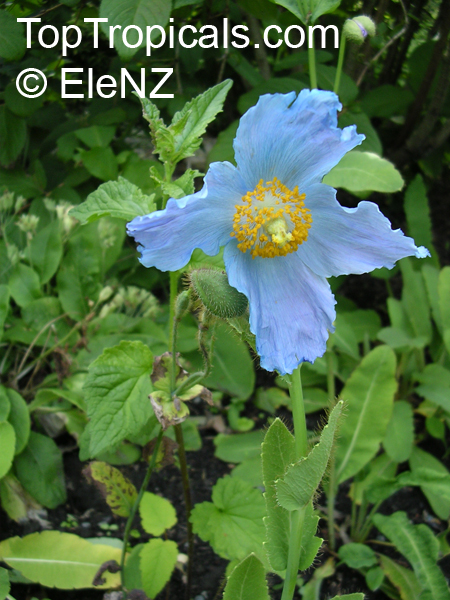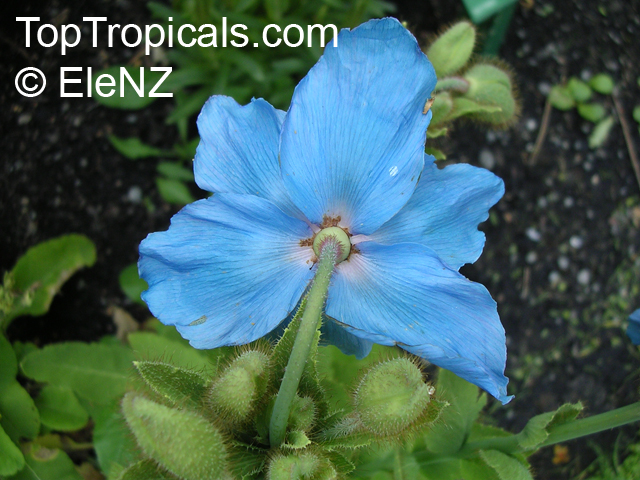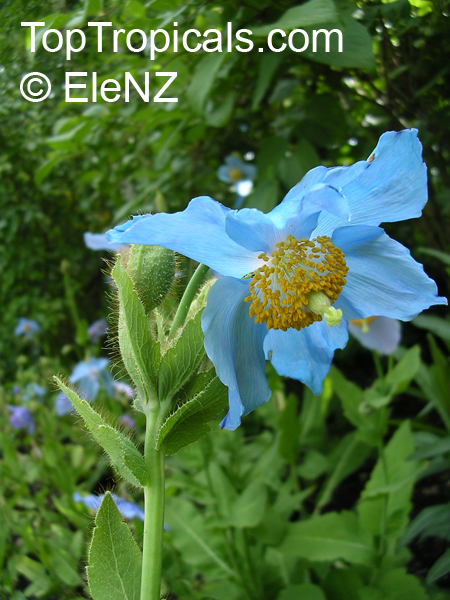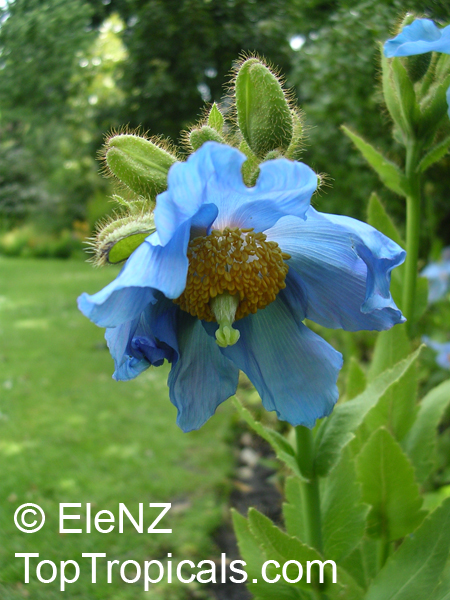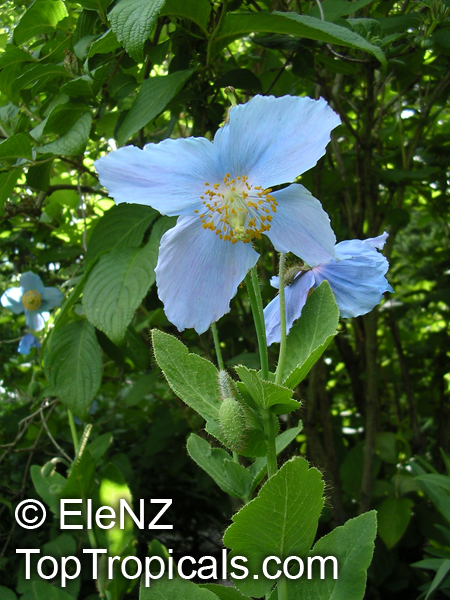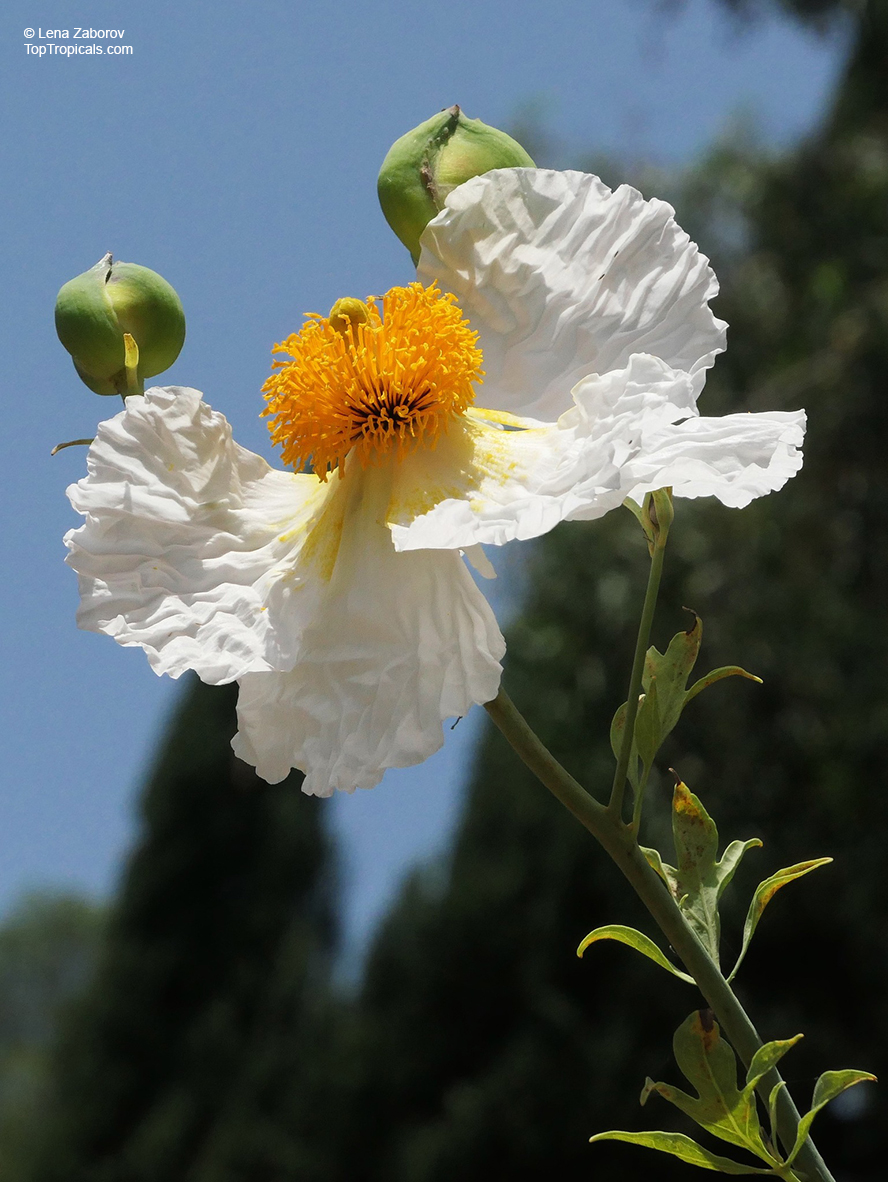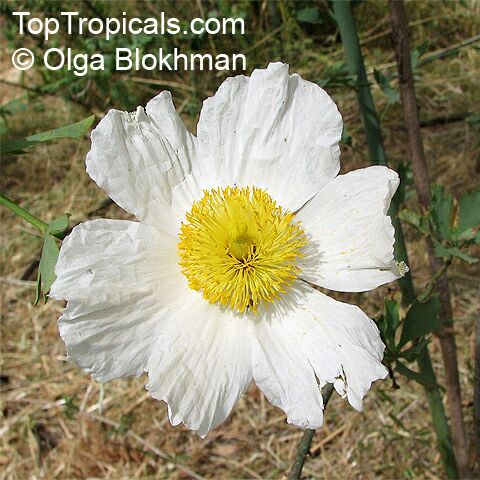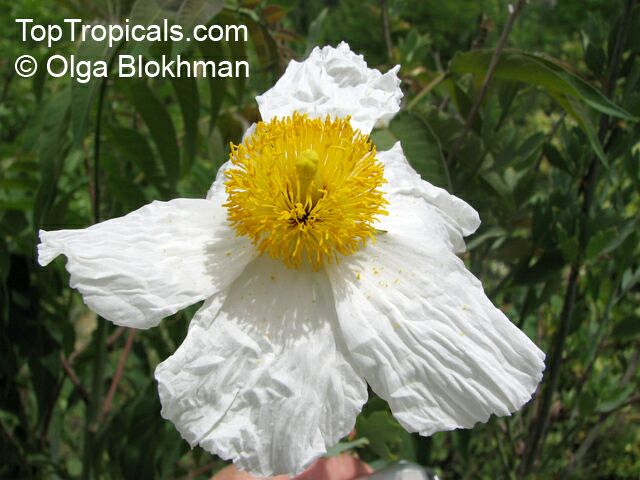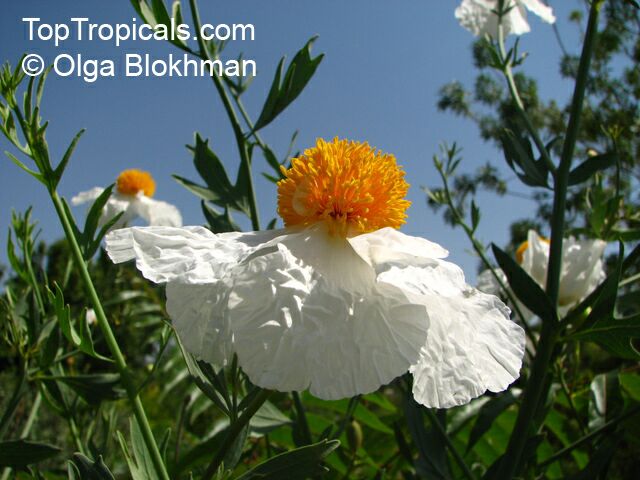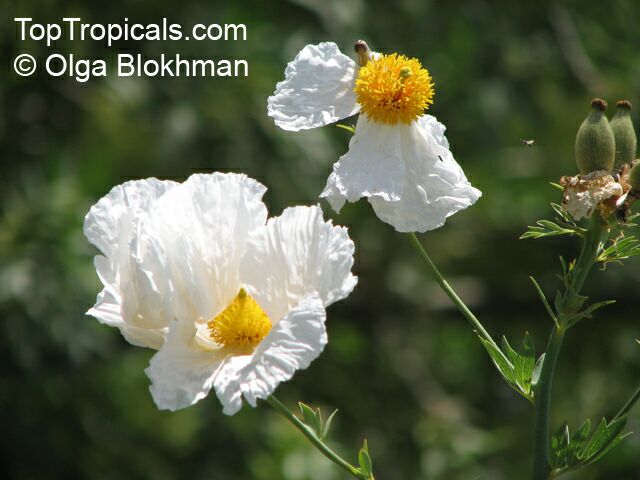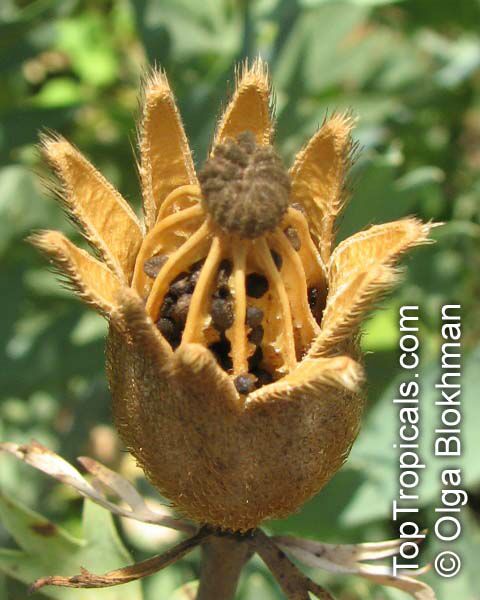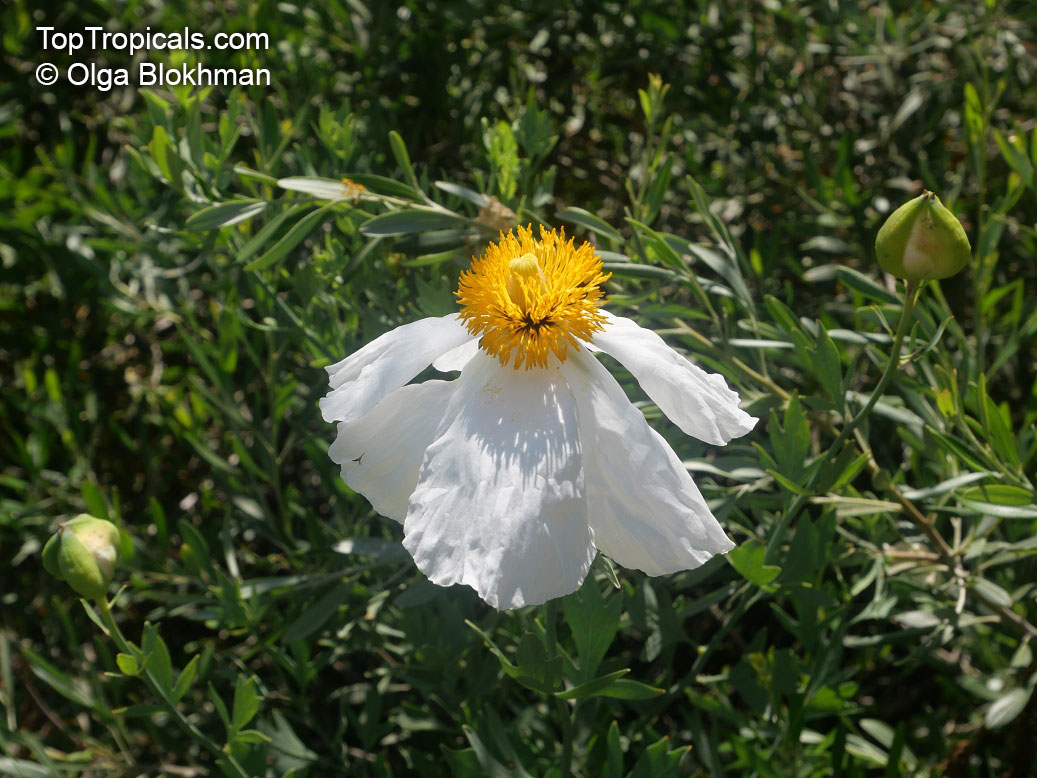Papaveraceae - Botanical Family
Top Tropicals Plant Encyclopedia
| Number of plants found: 6 |
Botanical name: Argemone sp.
Common name: Prickly Poppy
Family: Papaveraceae
Origin: Mexico










Native to Mexico, Argemone sp. (Prickly Poppy) is a small shrub that grows to a height of 2 to 5 feet. It is an ethnomedical plant with a long history of use before modern medicine. It has white to off-white flowers with ornamental foliage and yellow or orange flowers, and adds a special touch to any garden.
The Prickly Poppy thrives in full sun and semi-shade with moderate water requirements. It is a hardy plant, grown in USDA Zone 9-11. To care for this plant in cold regions, it's best to grow it in a pot and bring it indoors when temperatures drop below freezing. Prickly Poppy should be pruned regularly to keep the plant looking its best.
Despite its beauty, Prickly Poppy can be poisonous or toxic for humans and animals. The plant has spines and thorns, which makes it difficult to handle. Even though it can be a bit challenging to take care of, this shrub is worth the effort for its delightful yellow and orange blooms. The Prickly Poppy is a great addition to any garden, adding a unique touch with its beauty and exoticism.
Botanical name: Bocconia arborea
Common name: Bocconia Three
Family: Papaveraceae
Origin: Central America




Botanical name: Dendromecon rigida
Common names: Bush Poppy, Tree Poppy
Family: Papaveraceae
Origin: California, Mexico
Hardiness: 15°F




Dendromecon rigida is a fast-growing evergreen shrub native to California and Baja California. It features narrow, leathery leaves and bright yellow poppy-like flowers in spring. Drought-tolerant and suited for full sun, it thrives in dry, well-drained soils. Ideal for Mediterranean gardens and erosion control.
Botanical name: Eschscholzia californica
Common names: California Poppy, Golden Poppy
Family: Papaveraceae
Origin: California









Botanical name: Meconopsis sp.
Common name: Himalayan Blue Poppy
Family: Papaveraceae
Origin: Himalayas, Burma, China









Meconopsis sp. (Himalayan Blue Poppy) grows 2-5 feet tall with a spread of 1-2 feet depending on the species. The attractive foliage is bluish-green, with lobed and toothed leaves. The flowers appear in early summer, and come in several colors, white and off-white, blue, lavender, and purple. Some variations in the species also have yellow and orange flowers. This plant is an attractive addition to any garden, as it often attracts butterflies and hummingbirds.
This plant is native to the Himalayas, Burma and China, and can be grown in USDA zones 7-10.
The Himalayan Blue Poppy is an easy to grow plant as long as it is kept in moist, well-drained soil in partial shade to semi-shade. Water regularly, as this plant does not tolerate dry conditions, but avoid over-watering. Himalayan Blue Poppies are suitable for growing in containers, so this is an option for gardeners in areas with colder climates. In these colder regions, ensure the pot is well-drained, and place it in an area that gets some morning sun.
Botanical name: Romneya coulteri
Common names: Matilija Poppy, California Tree Poppy
Family: Papaveraceae
Origin: California, Mexico








Romneya coulteri is spectacular low growing shrub. It produces beautiful white and off-white flowers with a fragrant aroma. These flowers are attractive to butterflies and hummingbirds, making Matilija Poppies ideal for gardeners who wish to attract wildlife to their gardens.
Matilija Poppies are great for adding texture and color to gardens situated near the seaside. They are considered moderately salt tolerant, so they can also be grown near coastal regions with salt spray.
These spectacular shrubs are native to California and Mexico, and can be grown in USDA Zones 7 to 11.
If you are looking for a reliable, drought-tolerant shrub that will brighten up your garden, Matilija Poppies are a great choice. They prefer to be planted where they have well-draining soil that is kept moist. It is important to avoid overwatering, as this can cause root rot, and avoid over-fertilizing as this can produce too much top growth and make the plant look spindly. With plenty of sun, adequate water and the right soil, Matilija Poppy will make an eye-catching addition to any garden.
Use link to repeat this search:
https://toptropicals.com/cgi-bin/garden_catalog/cat.cgi?search_op=and&keyword_op=and&language=e&family=Papaveraceae
&number=10&no_change_lang=1&user=tt&sale=1&first=0
